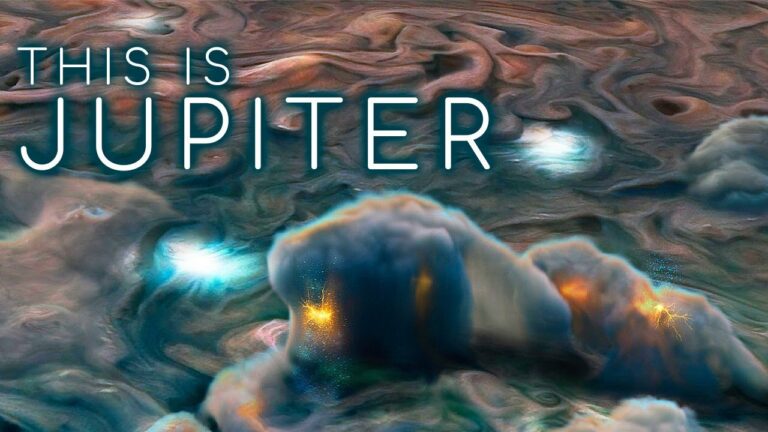NASA’s New Discoveries Deep Within Jupiter’s Clouds and Moons | Juno Year 6 Update
Jupiter is the fifth planet from the Sun and the largest in the Solar System. It is a gas giant with a mass more than two and a half times that of all the other planets in the Solar System combined, while being slightly less than one-thousandth the mass of the Sun. Jupiter is the third brightest natural object in the Earth’s night sky after the Moon and Venus, and it has been observed since prehistoric times. It was named after Jupiter, the chief deity of ancient Roman religion.
Jupiter is primarily composed of hydrogen, but helium constitutes one-quarter of its mass and one-tenth of its volume. It probably has a rocky core of heavier elements, but (like the Solar System’s other giant planets) lacks a well-defined solid surface. The ongoing contraction of Jupiter’s interior generates more heat than the planet receives from the Sun. Because of its rapid rotation, the planet’s shape is an oblate spheroid, having a slight but noticeable bulge around the equator. The outer atmosphere is divided into a series of latitudinal bands, with turbulence and storms along their interacting boundaries. A prominent result of this is the Great Red Spot, a giant storm which has been observed since at least 1831.
Jupiter is surrounded by a faint planetary ring system and a powerful magnetosphere. The planet’s magnetic tail is nearly 800 million kilometres (5.3 astronomical units; 500 million miles) long, covering nearly the entire distance to Saturn’s orbit. Jupiter has 84 known moons and likely many more, including the four large moons discovered by Galileo Galilei in 1610: Io, Europa, Ganymede, and Callisto. Io and Europa are about the size of Earth’s Moon, Ganymede is larger than the planet Mercury, and Callisto slightly smaller than Ganymede.
Pioneer 10 was the first spacecraft to visit Jupiter, making its closest approach to the planet in December 1973. Jupiter has since been explored by multiple robotic spacecraft, beginning with the Pioneer and Voyager flyby missions from 1973 to 1979, and later with the Galileo orbiter in 1995. In 2007, New Horizons visited Jupiter using its gravity to increase its speed, bending its trajectory en route to Pluto. The latest probe to visit Jupiter, Juno, entered its orbit in July 2016. Future targets for exploration in the Jupiter system include Europa, which likely has an ice-covered liquid ocean.
NASA’s Juno probe is coming to the end of a fantastic mission, but it’s still got some tricks up its sleeve yet.
Do not forget to share your opinion with us to provide you with the best posts !




0 Comments